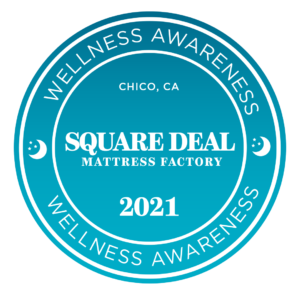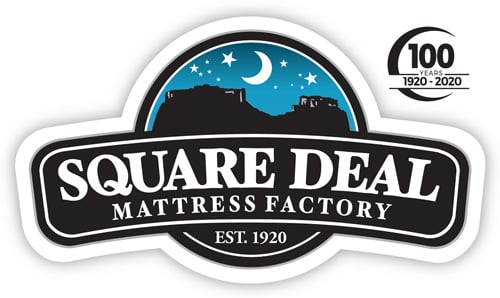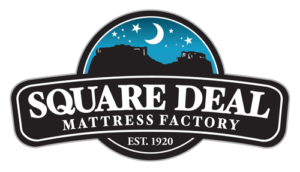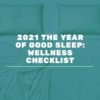How to Pick the Healthiest Mattress

 Welcome to the opening installment of our Year of Good Sleep wellness series! Today’s post is the first of several articles from local wellness experts, bringing you tips and advice on how to stay healthy in 2021–and ultimately bring you better sleep.
Welcome to the opening installment of our Year of Good Sleep wellness series! Today’s post is the first of several articles from local wellness experts, bringing you tips and advice on how to stay healthy in 2021–and ultimately bring you better sleep.
Today’s topic: how to choose the healthiest mattress for your unique lifestyle!
In true Square Deal style, we asked our expert Dreamologists what to look for in a mattress and why these choices make a difference in your sleep quality and overall health. Read on for their suggestions.
- First, determine what position you prefer for sleeping: Are you a side sleeper, stomach sprawler, or generally snoring on your back? When you know your body’s unconscious position preference, you can choose a mattress that best supports it. A mattress like the Registry, for example, is designed to relieve pressure points on shoulders and hips to support side sleepers. Proper support means no aches and pains, better sleep, and better overall health.
- Second, do you sleep hot or cold? Often waking up overheated or drenched in sweat? Look for a mattress with gel or a copper-infused foam layer designed to pull heat away from the body. Or, opt for construction encouraging extra airflow and circulation. If you’re freezing all night long, a non-toxic synthetic foam or contouring memory foam can help retain heat.
- Next, consider if you need a hypoallergenic option: Most people have a build-up of one or more allergens in their bedrooms, especially if you have pets. These allergens are often concentrated in reservoirs like sheets and other bedding. If these allergies build up–or you’re already allergic to them–there’s a greater likelihood of increased health problems like asthma, congestion, sneezing, and other problems that lead to restless sleep and poor health. Core mattress materials like natural latex are antibacterial and antifungal can resist dust mites, mildew, and mold.You can also look for mattress toppers and bedding designed to block allergens–just be sure you wash them regularly!
- Find the right size for you and your sleeping partner: The dreaded crick in your neck or kink in your spine is manageable every once in a while if you fall asleep on the couch, but constant pain from a cramped sleeping position results in poor quality of sleep and serious mobility problems during the day. Consider who will be on the bed with you each night. If it’s just you, a full size might be fine. You and a partner? Consider at least a queen size to give you enough room to move. 47 dogs, cats, and a kid or two? You might want to consider a king size. If you or your partner is especially tall, a California King or a custom XL mattress ensures enough space to sleep comfortably.
- Finally, be sure to avoid toxins and chemicals: A mattress full of chemicals isn’t healthy. In fact, the gasses these chemicals release can cause dangerous health concerns like respiratory problems and cancer in animals. Synthetic materials and flame retardants have traditionally been to blame, but fortunately, more and more natural options are now available for mattress construction. Look for materials such as organic cotton, organic wool, natural latex rubber, and organic bamboo throughout the design.
The next time you’re shopping for a mattress, keep this handy checklist in mind. Better yet? Reach out to one of our skilled Dreamologists. We’re here to help. Better sleep and overall health are just a few zzzs away!
Check back next week for our next in the Year of Good Sleep wellness series.







